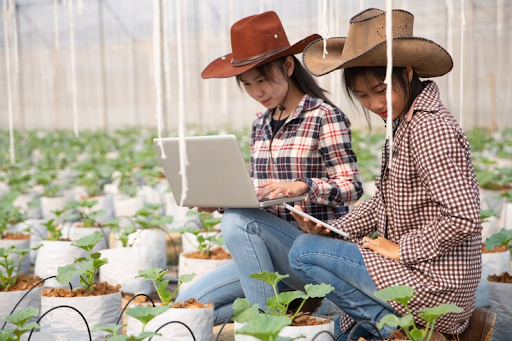Agriculture has been the mainstay of human civilization due to its provision of food, employment, and economic stability. However, traditional farming lacks predictable weather patterns, efficient use of available resources, and market-price stability. To address these problems, most modern farmers are embracing digital agriculture technology, which promotes productivity, sustainability, and profitability.
With the emergence of smart farming solutions, digital tools are changing the way farmers manage their land, monitor crops, and make informed decisions. These innovations ensure better resource allocation, reduced waste, and improved crop quality, leading to a more resilient agricultural sector.
Why Digital Farming Matters for Farmers
1. Enhanced Productivity and Efficiency
One of the major benefits of digital agriculture technology is maximizing output with minimal resources. With real-time data collection and AI-powered analytics, farmers can:
- Monitor soil moisture levels and optimize irrigation
- Detect pest infestations before they spread
- Automate processes like fertilization and harvesting
These innovations help farmers improve crop yields while reducing costs ensuring long-term profitability.
2. Climate-Smart Farming
Weather uncertainties and changes in climate become significant concerns in the modern world. Digital agriculture technology provides farmers with the most accurate updates of weather information that help to determine the sowing, watering, and harvesting of crops. Sensor and satellite-enabled monitoring of land conditions allows on-the-spot observations for preventing failure and mitigating the risk in climate change situations.
3. Sustainable Agriculture Practice
With growing concerns about environmental impact, digital farming encourages eco-friendly practices. Technologies such as blockchain ensure traceability, reducing food fraud and promoting sustainable sourcing. AI-driven decision-making helps minimize pesticide and fertilizer use, leading to healthier crops and a reduced carbon footprint.
4. Improved Market Access and Fair Pricing
The biggest challenge farmers face in getting a good price for their produce is sorted out through digital platforms since farmers are directly connected with the buyers, eliminating middlemen and, thus, more profit. Online marketplaces and smart contract systems ensure transparency, allowing for fair dealings and timely payments.
5. Better Financial Inclusion and Risk Management
One of the greatest fears of a small-scale farmer is access to financial resources. With digital platforms being able to assess credit in real-time, providing financial institutions with far more data will help insurers create better policies for farmers looking to safeguard against unplanned crop losses.
The Role of Digital Tools in Modern Farming
- AI and Machine Learning Towards Smarter Farming
AI-driven tools analyze vast amounts of data to provide farmers with precise recommendations on soil health, crop diseases, and resource optimization. Machine learning models help predict potential risks, empowering farmers to take preventive measures before problems escalate. - Blockchain for Transparency and Trust
With blockchain technology, the traceability of food products, from farm to table, is fully guaranteed. This enhances the confidence of consumers and better recognizes farmers in sustainable practices while avoiding exploitation and the possibility of price manipulation through transparent transactions. - IoT and Remote Sensing for Precision Agriculture
With real-time monitoring of temperature, humidity, and soil conditions, farmers can make more informed decisions by using data gathered from IoT sensors. Drones with remote sensing technology help check crop health in large areas by detecting nutrient deficiency or pest infestation early in the process. - Digital Marketplaces for Direct Selling
Farmers can now sell their produce directly to consumers, retailers, and exporters through digital platforms. This does away with intermediaries, resulting in better prices and higher profitability. Digital documentation also ensures smoother transactions and compliance with food safety standards.
Conclusion
Digital agriculture technology has changed the dynamics of farming. The industry has been transformed to be data-driven, efficient, and sustainable with the integration of AI, IoT, blockchain, and digital platforms that enhance productivity, reduce environmental impact, and improve access to better markets.
At ASQI, empowering farmers with cutting-edge technology can revolutionize the agricultural sector. Through expert advisory services, reliable sustainability verification, and enhanced market access, we ensure that the benefits of digital advancements reach farmers. The future of farming lies in innovation, and with ASQI, farmers can unlock the power of digital agriculture for a more prosperous and sustainable tomorrow.







